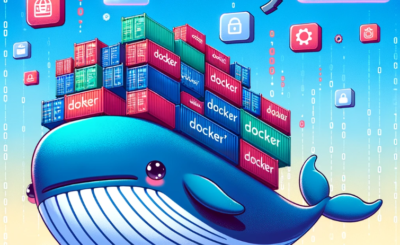Table of Contents
Introduction
The world of IT operations is evolving at an unprecedented pace. As businesses increasingly rely on technology, the need for efficient and effective IT operations becomes paramount. Traditional IT operations (IT Ops) have served businesses well for decades, but with the advent of artificial intelligence (AI) and machine learning (ML), a new paradigm has emerged: AIOps.
This article, AIOps vs Traditional IT Ops: Why You Need to Make the Switch Now, delves into the distinctions between AIOps and traditional IT Ops and explains why making the switch is essential for modern businesses.
What is Traditional IT Operations?
Understanding Traditional IT Ops
Traditional IT operations involve the management of an organization’s IT infrastructure, including hardware, software, networks, and data centers. IT teams perform tasks such as monitoring system performance, managing incidents, troubleshooting issues, and ensuring system security.
Key Challenges in Traditional IT Ops
- Manual Processes: Many tasks are performed manually, which can be time-consuming and prone to human error.
- Reactive Approach: Traditional IT Ops often respond to issues after they occur, leading to downtime and disruptions.
- Data Overload: With the increasing volume of data, it becomes challenging to analyze and derive actionable insights.
- Scalability Issues: Managing large-scale IT environments can be difficult and resource-intensive.
What is AIOps?
Defining AIOps
AIOps (Artificial Intelligence for IT Operations) leverages AI and ML to automate and enhance IT operations. It integrates big data, analytics, and machine learning to monitor, analyze, and optimize IT infrastructure and applications in real-time.
Benefits of AIOps
- Automation: Reduces manual effort by automating routine tasks and processes.
- Proactive Issue Resolution: Identifies and addresses potential issues before they impact the business.
- Enhanced Insights: Provides deep insights and analytics, enabling better decision-making.
- Scalability: Easily scales to manage large and complex IT environments.
AIOps vs Traditional IT Ops: Key Differences
Automation and Efficiency
Traditional IT Ops
- Manual Processes: Reliant on manual intervention for most tasks.
- Time-Consuming: Routine tasks take up a significant amount of time.
AIOps
- Automated Processes: Uses AI and ML to automate tasks, reducing the need for manual intervention.
- Increased Efficiency: Frees up IT staff to focus on strategic initiatives.
Proactive vs Reactive Approach
Traditional IT Ops
- Reactive Management: Issues are often addressed after they occur, leading to downtime.
- Incident Response: Focuses on resolving incidents rather than preventing them.
AIOps
- Proactive Management: Predicts and resolves issues before they impact the business.
- Preventive Measures: Utilizes AI to identify potential problems and implement preventive measures.
Data Analysis and Insights
Traditional IT Ops
- Limited Analysis: Manual data analysis can be slow and prone to errors.
- Reactive Insights: Insights are often derived after an issue has occurred.
AIOps
- Advanced Analytics: Uses big data and ML to analyze vast amounts of data in real-time.
- Actionable Insights: Provides real-time insights that help in making informed decisions.
Scalability
Traditional IT Ops
- Resource Intensive: Managing large-scale environments requires significant resources and effort.
- Scalability Issues: Struggles to scale efficiently with growing IT infrastructure.
AIOps
- Easily Scalable: Can manage large and complex environments with ease.
- Cost-Effective: Reduces the need for additional resources by optimizing existing infrastructure.
Why You Need to Make the Switch Now
Competitive Advantage
In today’s fast-paced digital landscape, staying ahead of the competition requires agility and efficiency. AIOps provides a competitive edge by ensuring that IT operations are optimized, reducing downtime, and improving overall performance.
Cost Savings
Implementing AIOps can lead to significant cost savings. By automating routine tasks and optimizing resource usage, businesses can reduce operational costs and allocate resources more effectively.
Improved Customer Experience
Downtime and performance issues can negatively impact customer experience. AIOps helps in maintaining high availability and performance, ensuring that customers have a seamless experience.
Future-Proofing Your Business
As technology continues to evolve, the complexity of IT environments will only increase. AIOps equips businesses with the tools they need to manage this complexity, ensuring that they are prepared for future challenges.
FAQs about AIOps vs Traditional IT Ops
What is the main difference between AIOps and traditional IT Ops?
The main difference is that AIOps leverages AI and ML to automate and enhance IT operations, while traditional IT Ops rely on manual processes and reactive management.
How can AIOps improve IT operations?
AIOps improves IT operations by automating routine tasks, providing real-time insights, predicting and preventing issues, and optimizing resource usage.
Is it difficult to switch from traditional IT Ops to AIOps?
The switch can be complex, but with a well-planned strategy and the right tools, it can be managed effectively. It’s important to assess your current IT environment, define clear goals, and choose an AIOps platform that meets your needs.
Can small businesses benefit from AIOps?
Yes, AIOps is beneficial for businesses of all sizes. Small businesses can particularly benefit from the automation and efficiency gains, allowing them to compete more effectively.
What are some of the top AIOps platforms available?
Some of the top AIOps platforms include Splunk, Moogsoft, Dynatrace, AppDynamics, and BigPanda.
Conclusion
The transition from traditional IT operations to AIOps is not just a trend; it’s a necessity for modern businesses aiming to stay competitive and efficient. As we have explored in AIOps vs Traditional IT Ops: Why You Need to Make the Switch Now, AIOps offers numerous advantages, including automation, proactive issue resolution, enhanced insights, and scalability. By making the switch to AIOps, businesses can achieve significant cost savings, improve customer experience, and future-proof their operations.
Embrace the future of IT operations with AIOps and transform the way your business manages its IT infrastructure. The time to make the switch is now! Thank you for reading the DevopsRoles page!

